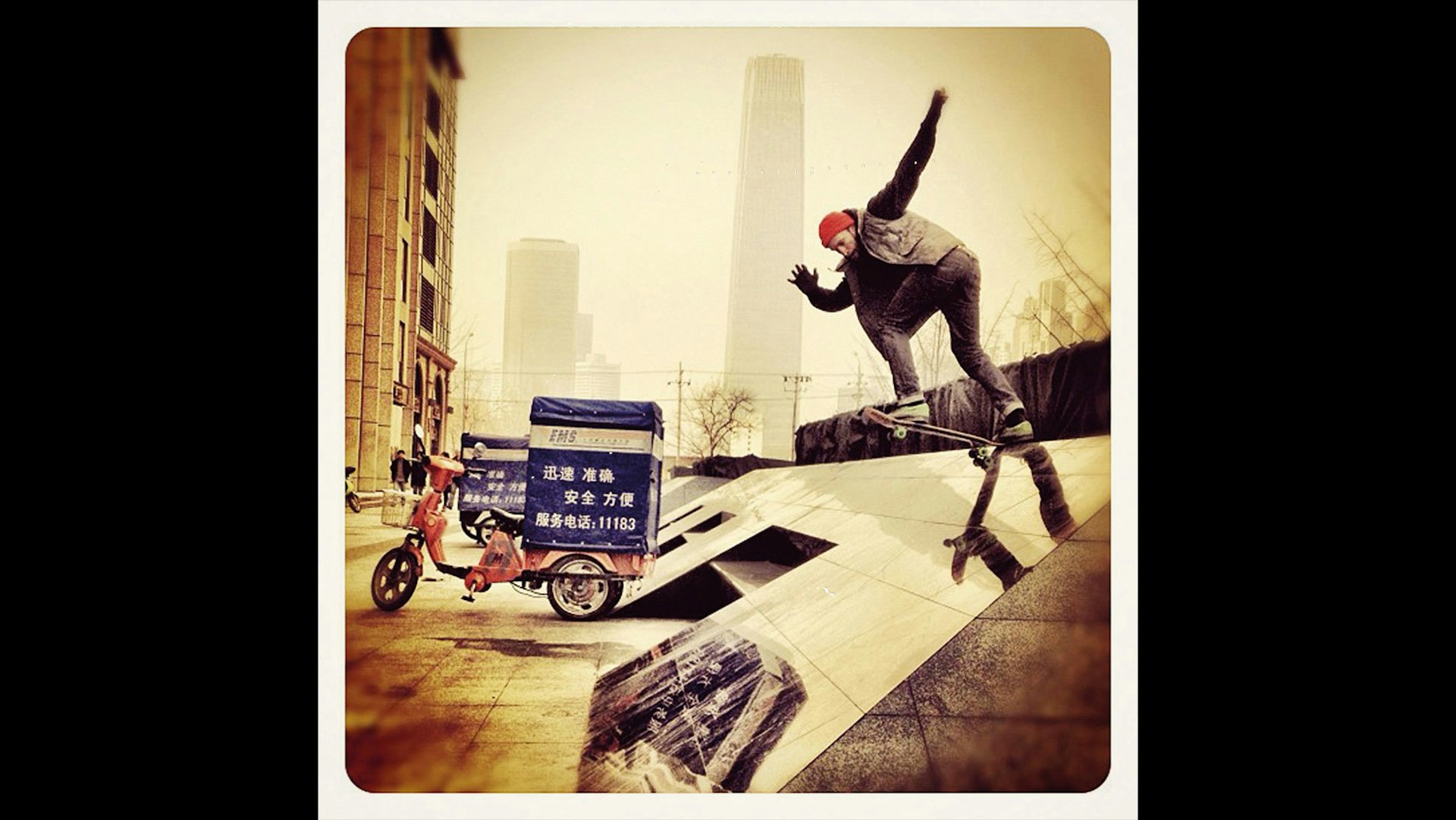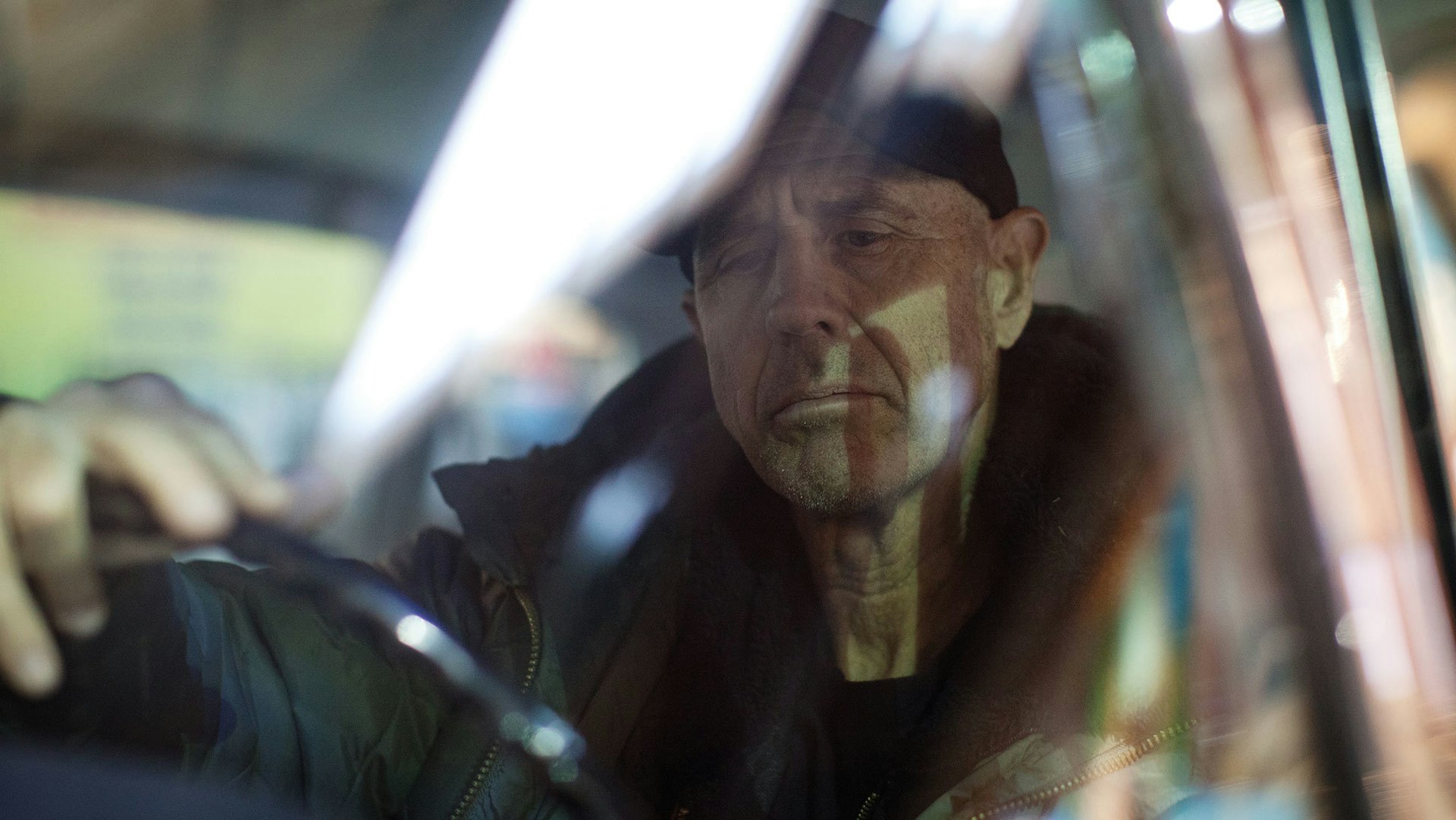
Jamie Thomas
- Text by Shelley Jones
- Photography by Jamie Thomas
Jamie Thomas’ rolling career is synonymous with the evolution of skateboarding itself. As team manager of Ed Templeton’s Toy Machine, he helped breathe new life into nineties skate culture. But it’s through his own companies – Zero Skateboards (1996) and Fallen Footwear (2003) – that his creative legacy continues to manifest. As owner and president of Black Box Distribution, he’s busier than ever.
But take a gander through Jamie’s prolific Instagram offerings (followed by thousands) and you’ll find an intimate, artistic portrait of a life behind the scenes. HUCK caught up with the thirty-seven-year-old skate rat to find out why this digital platform has captured his imagination.
When did you start using Instagram and why?
I started about a year and a half ago. I was always kinda disgruntled about Twitter and begrudgingly started an account, but never really liked it. I thought it was really over dramatising what I was thinking or doing and didn’t feel like [my updates] were justified or validated as newsworthy. But when I caught wind of Instagram, and saw that it was the visual version of Twitter, where you shoot a photograph and your caption is second to the actual image, I thought, ‘Well that’s the way it should be!’ It’s the [social network] with the least bullshit. Instagram, in its purity, is just an update of what your friends, and people that you’re into, are up to. And you can be artistic – you can express yourself. I’ve always been into photography on one level or another – it’s a hobby and I shot some of the Zero ads a long time ago. Through making skateboarding videos, I got a real feel for composition.
Some photography purists say Apps like Instagram and Hipstamatic are a cheat’s tool. What would you say to such sceptics?
Anyone can take a picture on a camera phone, but if someone can take a photo that everyone is going to be inspired by, then that’s a different challenge. I try and make every photo that I post on Instagram worth clicking the ‘like’ button. I want to represent myself and the scene well and hopefully show an artistic view of whatever I’m looking at. It’s not rocket science, anybody could do it, but I’ve got a pretty decent following on Instagram somehow, and I don’t want to disappoint those followers. I try to do quality over quantity. If I wouldn’t click the ‘like’ button myself, I don’t put a photo up.
Who do you think engages with your shots and why?
I think initially it started off as skateboarders and fans, but I’m into nature and landscape, too. A lot of the skaters got bored like, ‘Too many sunsets! Too many landscapes!’ But I just take photos of anything I’m inspired by and try to get a good balance of skate, family and landscape. I try to make every photo special and I think if you do that you get a reputation, and people want to follow you. If people are into it that’s cool, and if not then I don’t really care. It’s just what I’m seeing, y’know? It’s what I’m inspired by.
Anyone can get involved with Instagram. Is technology like this a new democratising force?
Absolutely. I think that’s where all the followers come from. If it was an elitist thing, then it wouldn’t have the community. It’s like that game Othello [Reversi]: ‘Takes a minute to learn how to play, but a lifetime to master.’ It’s something that anyone can do, but that doesn’t mean you’ll be able to do it as good as the best people doing it. You can develop your own style and you can develop your own identity through your photos. Young teenage kids are doing it and I think that’s really cool, because it’s cultivating them having an opinion, having a style, thinking about what they’re creating and getting feedback on that creation. My wife thinks that too many things are judged and need self-reassurance in this day and age, but it’s just about that ability to have feedback very rapidly and then change your course of direction. If you want to. If you don’t, you can just stay on course and say, ‘Eff the feedback!’ But I think it’s really cool that it’s so accessible. That’s what makes the community so exciting.
I guess, in that way, it’s a similar process to skateboarding?
It is, totally. It really is like skateboarding. Anyone can start doing it and if you wanna be good at it, yeah, you have to devote yourself to the craft, just like anything in this world.
Could a platform like Instagram make magazines a bit redundant, as more people are creating awesome content and sharing it for free? Especially those pockets of media who still see themselves as ‘dictators of cool’?
Yeah, for sure. If people are serious about their Instagram, then it could be their end-all source for putting information out. But people still want to keep [magazines] relevant. The going creed right now is that you can’t post a skate photo from a skate spot when there’s a photographer there. If you do, you’re an asshole, because you’re not leaving any story for them to tell. The only time you see a skate photo on my Instagram is when there’s no skate photographer there, or we don’t have access to their photos, or it’s the warm-up trick or whatever. In China, for example, I was taking skate photos because there were no other photographers. I also used the same treatment on all my photos from that trip so when you flip through my Instagram you’ll get to that section and you’ll know that it’s a mini [contained] article, y’know? I think I’m going to try and do that more – develop a look that really works with the weather and environment of a trip in order to depict a certain mood and style. The China trip was an experiment. It was winter in Asia and really overcast and cloudy, so I kind of made this moody, dark, China look – like an old Chinese film!
As a skateboarder, and someone who travels a lot in search of new spots, do you think you see things that many people overlook?
I think so. I think too, just having Instagram, you’re always looking for a photo. You’re always looking for the hidden treasure in whatever you’re encountering, because you want to tell your friends a story about what you’re doing. But at the same time, there are so many cliches that so many people fall into, so you’re trying to look for your own angle. I think there are a lot of hidden treasures to be seen out there. I don’t know that I see things differently because of skateboarding, but I’m showing a different side to things because skateboarding’s what I’m into. Our skateboarding journey ends up being the story I’m telling.
In the fifth episode of your Let The Good Times Roll series, you go through your epic collection of magazines, videos, tees and decks. Why is archiving important to you?
I’ve saved everything that’s had value to me at one point in my life that I thought maybe, later on, I’d want to wear, cherish or give away. I don’t know, I’ve always felt that memorabilia and collectibles are taken for granted; people just kind of disregard that stuff. But I always knew that I was building a career and that I would someday wanna look back and reflect on all the stuff that I’d done. So, I tried to save mementos along the way, consistently picking and choosing what I really wanted to keep. Now I’m filtering through those things and giving them away. I’m actually opening an eBay account because I’m trying to get a skatepark built in my hometown in Alabama and I’m going to put all of the money from the eBay sales towards that fund. So people can contribute to that as well as have a piece of my history, or their own skateboard history; original things that they may have been influenced by.
Can online archives, like Instagram, ever replace tangible collections?
I think elements of it are the same, y’know? Because you’re basically documenting your travels and the mementos of your life by archiving photographs. And these photographs will live on; they’ll live in a small space on the web, but they’ll live on. They’re archived. I’m starting a website called ‘Thrill Of It All’, which will be a hub for my Instagram, Facebook, Twitter and Let The Good Times Roll videos, as well as a space to share my personal influences and inspirations. I’m going to archive all my old video parts and interviews as well as all my current travels. Thrill Of It All was the name of the first Zero video and it’s also pretty much why we do what we do; it’s all just for the thrill of it all.
In a world that moves so fast, are all these things – blogs and online archives – a way to slow down and reflect?
I totally think so. If not, you basically don’t have a road map of where you’ve come from. I think Instagram is a great product of that. Some days I don’t Instagram at all – if I’m hanging out with my family and it feels like it cheapens the moment that I’m living in. But when the timing’s right and a situation presents itself – when it looks like time is standing still for a moment, and I can spare the time to shoot a photo, then I do.
